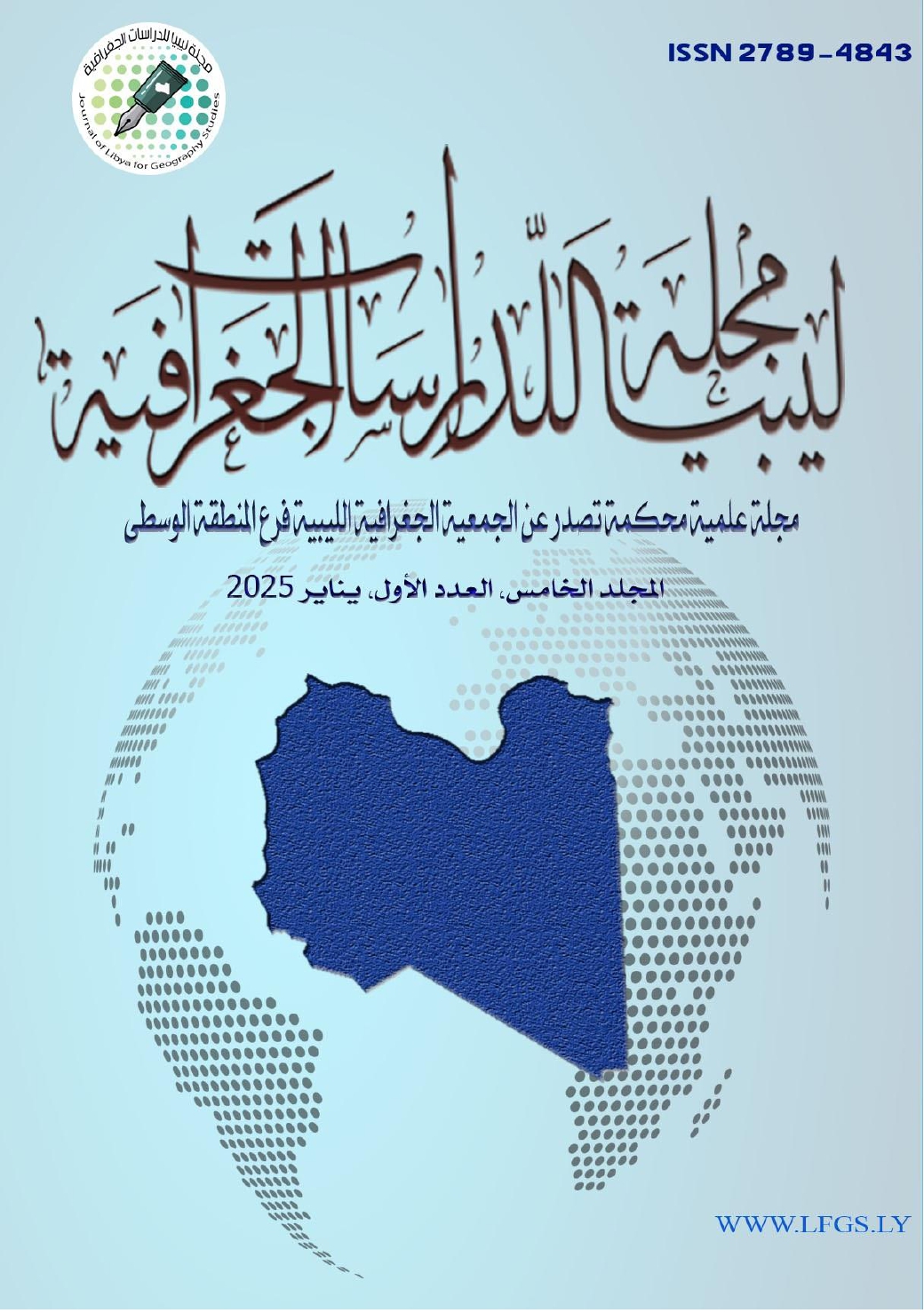Manifestations and repercussions of climate change on the oases in Mauritania “The oases of Adrar Province are a model"
DOI:
https://doi.org/10.37375/jlgs.v5i1.3116Keywords:
climate change, migration, economic activities, MauritaniaAbstract
The oasis area of Mauritania is of exceptional cultural, economic and social importance. In ancient times, cities and urban centres grew around oases and contributed to the prosperity of many economic and cultural activities between the north and south of the Sahara. The desert climate that characterizes the deserts of Mauritania and the wilaya of "Adrar", in particular has contributed to the growing dependence of the population on their livelihoods and stability by building on these oases. However, as the effects of recent climate change are increasing, Mauritanian space is burdened by profound radical environmental and human transformations, most parts of Mauritanian space have been printed, and its host areas have had a significant share.
In this article, we will try to highlight the most visible manifestations and impacts of climate change and associated migration and displacement at the level of the oases in wilaya of Adrar, which are an important example. We adopted to study these changes, analyzing a climate database for a significant reference period, spanning from 1940 to 2019. For the migration and population data, we adopted the results of the general population and housing censuses for the years (1988, 2000, 2013, and 2023) of the National Bureau of Statistics.
Addressing the study theme demonstrated the most important manifestations and impacts of climate change on oases wilaya of Adrar; resulting from droughts, increasing desertification conditions and migration of the working-class Poor living conditions and lack of infrastructure and social services for the oasis population; all this has contributed to the deterioration of oases in the state in general.
References
- الجمهورية الإسلامية الموريتانية (ج. إ. م)، وزارة التنمية الريفية، (2007)، الحالة الراهنة للقطاع الزراعي والريفي في موريتانيا وآفاقه.
- الجمهورية الإسلامية الموريتانية (ج. إ. م)، وزارة الزراعة، (2016)، النتائج النهائية للحملة الزراعية 2015-2016، إدارة الإحصاءات والإعلام الزراعي المسح حول الأسر والمستغلين الزراعيين، التقرير المؤقت.
- المهدي الصحاف ومصطفى الطاهر، (1981)، هذه موريتانيا، دراسات في جغرافية موريتانيا الحديثة، ط 1، بغداد.
- معطيات الهيئة الوطنية للأرصاد الجوية (البيانات المناخية لمحطة أطار 1940-2019).
- ولد محمد الأمين سيدي محمد، (2007)، الواحات في ولاية آدرار: المجال والإنسان، نموذج واحات مقاطعة أوجفت، دبلوم الدراسات العليا المعمقة، كلية الآداب والعلوم الإنسانية، الجديدة، جامعة شعيب الدكالي.
- Kneyta, Mohamed et Doulbeau, Sylvie. (2008). Le palmier dattier en Mauritanie, Actes du 3e Séminaire du réseau AUF BIOVEG «Biotechnologies du palmier dattier» Montpellier (France), 18-20 novembre 2008 ; IRD Éditions, Institut de recherche pour le développement (IRD); Paris, 2010.
- Programme de Développement Durables des Oasis (PDDO). (2015). Introduction du pompage à énergie solaire dans les oasis de Mauritanie, Étude de cas. 2015.
- HORIZONS, (2020). l’orpaillage : Sur la trace des exploitants artisanaux de l’or à Guelb N’Dour et Chami.
- République islamique de Mauritanie (R.I.M), Agence Nationale de la Statistique et de l’Analyse Démographique et Economique (ANSADE). (2024), Population des Wilayas, Moughataa et Communes RGPH 2023, Mauritanie, Nouakchott.
- République islamique de Mauritanie (R.I.M), Ministère du Développement Rural (MDR), DPCSE. (2012). RAPPORT PROVISOIRE SUR LE RECENSEMENT DES PALMIERS DATTIERS EN MAURITANIE.
- R.I.M, Office National de la Statistique (ONS). (2017). RGPH 2013, Monographie régionale de la Wilaya de l'Adrar.
- République islamique de Mauritanie (R.I.M), Office National de la Statistique (ONS). (2015), Répartition spatiale de la population, Analyse des Résultats définitifs du RGPH 2013, Mauritanie, Nouakchott.
- République islamique de Mauritanie (R.I.M), Office National de la Statistique (ONS). (2011), Wilaya de l’Adrar en chiffres 2007-2010.














